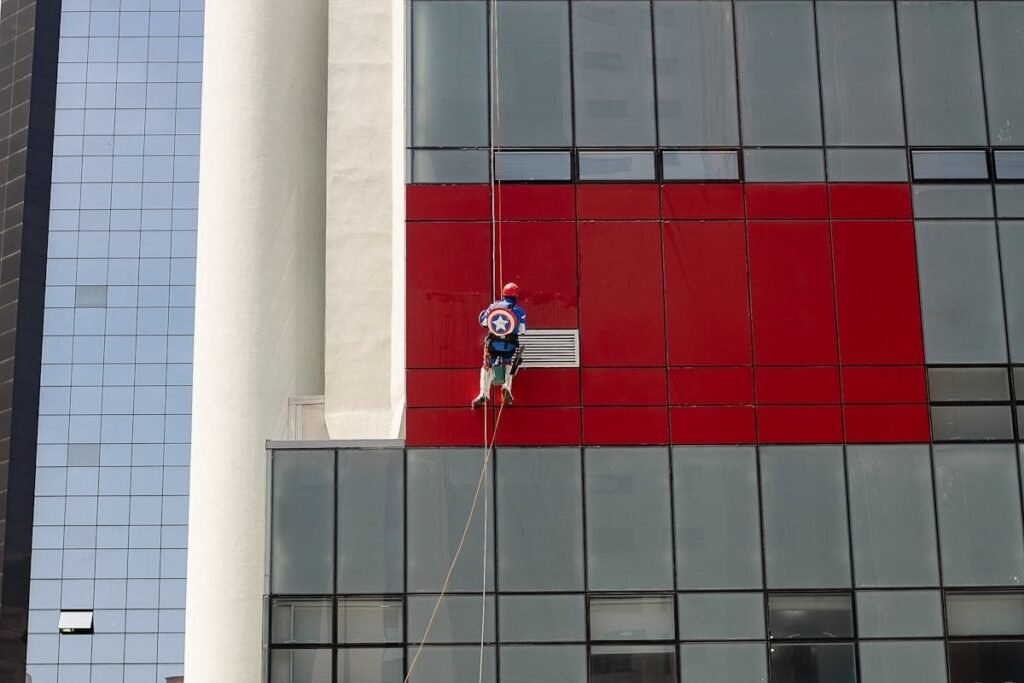
It’s easy to admire the superheroes who work high above the skyline, dangling from ropes to fix, clean, or inspect buildings taller than your wildest fears. But for these brave individuals—known as rope access technicians—working at death-defying heights is just another day at the office. The question you might be asking, though, is how on earth do they stay safe up there?
Spoiler alert: it isn’t magic. It’s years of training, rigorous safety protocols, and a fair bit of teamwork that keep these daredevils coming home to their families every night instead of, well, taking an unscheduled nosedive.
Strap in (or should we say “harness up”?) as we explore how rope access companies ensure safety while working at extreme heights.
The Safety Backbone of Rope Access
Before we get into the nitty-gritty of anchor safe rope access, here’s a comforting statistic to start with—rope access has one of the best safety records in the entire working-at-heights industry. Yup, it’s even safer than those ladders you’ve been standing on to clean your gutters.
This remarkable track record boils down to three uncompromising pillars of safety:
- Training, Training, and More Training
- State-of-the-Art Equipment
- Strict Protocols and Procedures
Let’s break each one down while keeping a solid grip on our metaphorical ropes.
1. Training That Makes the Gym Feel Like a Breeze
Before someone becomes a rope access technician, they go through extensive (and we mean extensive) training. Think of it as ninja school, but instead of mastering camouflage, they’re learning how not to fall off skyscrapers.
Licensed instructors drill everything from core climbing techniques to advanced rescue operations into trainees. There’s no skipping class here—training must meet the standards set by internationally recognized organizations like IRATA (Industrial Rope Access Trade Association) or SPRAT (Society of Professional Rope Access Technicians).
Here’s what’s typically covered in rope access training programs:
- Equipment mastery: Knowing how to use harnesses, ropes, and other essential tools like a pro.
- Advanced knot skills (yes, there are knots beyond bunny ears!).
- Emergency drills: Mastering self-rescue techniques and mock rescue missions to prepare for worst-case scenarios.
- Worksite awareness: If there’s a stray risk on-site, trust a rope access tech to spot it faster than you can say, “watch your step.”
2. Gear That’s Reliable Enough to Bet Your Life On
Rope access technicians owe a lot to their carefully engineered equipment. It’s not just gear—it’s lifesaving equipment. Each piece undergoes rigorous testing to withstand the demands of extreme height work.
Here’s what a technician’s life-saving toolkit includes:
- Dynamic and Static Ropes
The ropes themselves are the star of the show. Dynamic ropes stretch slightly to absorb shocks (perfect for climbing), while static ropes stay firm for stability in lifting and rigging tasks.
- Harnesses
These aren’t your department store climbing harnesses. Rope access professionals use full-body harnesses designed to distribute forces more evenly across the body.
- Backup Systems
Every technician uses a second rope as a safety line, often secured through a fail-safe device that locks instantly in case the primary rope is compromised. Yes, folks, this is redundancy at its best.
- Helmets and Personal Protective Equipment (PPE)
Because there’s no dodging gravity when you’re 400 feet up. Helmets protect workers from falling objects (or their own heads meeting hard surfaces in case of a slip).
And here’s the kicker—this equipment isn’t just used; it’s meticulously checked, maintained, and replaced to meet stringent safety standards.
3. Protocols That Leave No Room for Error
If you thought the phrase “better safe than sorry” was just a suggestion, rope access companies think otherwise. Their work is governed by safety protocols so strict that even a minor oversight is as unacceptable as leaving your parachute behind during a skydive.
Before heading up into the skies, teams engage in:
- Job Hazard Analysis (JHA)
Every worksite is scoured for risks so technicians can develop a comprehensive safety plan tailored to the task.
- Rescue Plans
Murphy’s Law says if something can go wrong, it might just do so. Rescue plans prepare workers to handle every conceivable what if scenario.
- Tool Tethering
Ever hear of a wrench falling 40 stories and embedding itself in concrete? Fun fact—it happens. That’s why rope access companies tether every single tool.
- Constant Monitoring
Technicians work in pairs or teams so there’s always someone else watching their back—literally!
Why All of This Matters
You might be wondering—why should I care about rope access safety if I don’t plan on scaling buildings anytime soon?
The truth is, prioritizing safety (and preparing for the unexpected) is a universal lesson that applies to all industries and walks of life. Rope access companies show us what it means to invest in people, prepare for worst-case scenarios, and build systems where risk meets resilience.
Want to Learn More?
Whether you’re in awe of the daredevils hanging from skyscrapers or you’re considering hiring a rope access team for your next project, remember that safety is always part of the package.
Have questions about working at heights or need experienced professionals for your unique needs? Reach out to our team—and rest assured, we’ve got the ropes covered!





